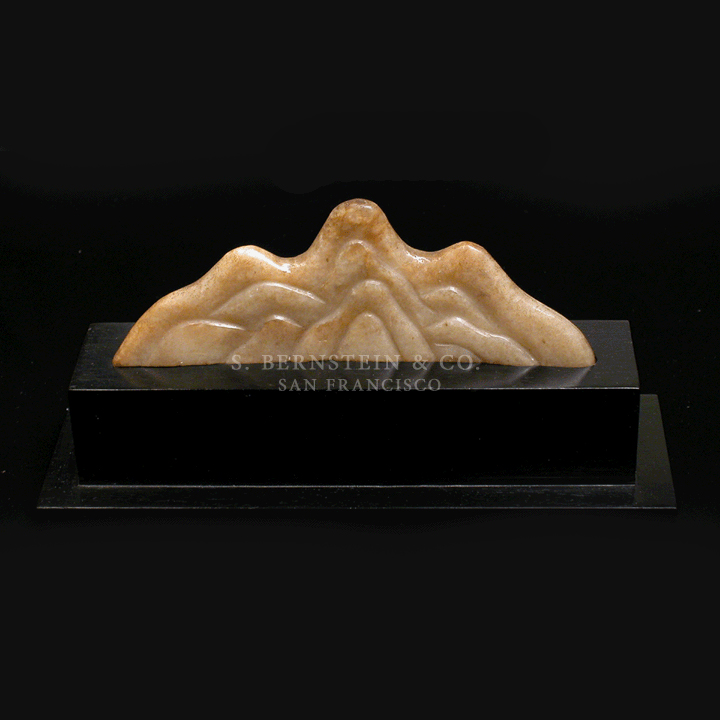
Yellow and Brown Nephrite Jade
Song Period, 960-1279AD
Length: 16 cm
The scholar’s studio offered an idealized environment where the Chinese literati could read, compose and paint protected from the intrusions of the outside world. As individual as the occupant, the studio reflected the scholar’s aesthetic and spiritual realms in the physical setting. Rocks and mountains constituted an important part of the natural landscape, which was a prevalent fascination of the Chinese scholar of the period. The shape of this mountain range is perfectly suited for its function on the scholar’s desk.
The smooth polish and fluidity of lines are characteristic elements of the Song period jade working tradition. Shaped from a rich yellow jade, the elegant composition of the brush rest depicts three peaks with smaller peaks on both sides. The piece is well balanced on a fitted wooden stand. In our opinion, this jade mountain is an excellent example of Song period jade scholars art.
SALE PENDING
Reference number 3051
Ex Collection: Gerald Godfrey, Hong Kong
Exhibited: The Dayton Art Institute, 1989, no. 363
Published: Stones of Virtue, Chinese Jades from the Gerald Godfrey Collection, 1989,
Page 51, no. 363
In Sacred Mountains in Chinese Art, Kiyohiko Munakata explains the reason behind the admiration of the mountain with a prayer by the Emperor Taizong from the Tang dynasty to Mt. Heng, the Sacred North Mountain: “The sacred mountains contain fine soaring peaks and fields of wilderness with special markers where strange animals roar and dragons rise to heaven, and the spots where wind and rain are generated, rainbows stored and cranes beautifully dressed. These are the places where divine immortals keep moving in and out.
The countless peaks overlap each other; thick vapor wraps green vegetation, layers of ranges move into each other and thus the sunlight is divided into numerous shining rays. The steep cliffs fall one thousand leagues into the bottom and the lone peaks soar to ten thousand leagues high. The moon with laurel flowers blooming in it sheds veiled light. The clouds hang over the pine trees with clinging vines. The deep gorges sound loud in winter and the flying springs are cool in summer. … Its rugged mass is forever solid, together with the Heaven and Earth. Its great energy is eternally potent, in the span from the ancient to the future. …” Sacred Mountains in Chinese Art. Kiyohiko Munakata. Krannert Art Museum, Urbana-Champagne. University of Illinois Press, 1991. Page 2.
For a detailed discussion of the importance of mountain imagery and practices associated with mountain worship during the Zhou dynasty, see Sacred Mountains in Chinese Art. Kiyohiko Munakata. Krannert Art Museum, Urbana-Champagne. University of Illinois Press, 1991. Pages 6-7. Changing attitudes in mountain worship and practices during the Six Dynasties and Tang periods can be found on pages 34-48.
To inquire about this work of art, contact us at 415.299.1600 or email at sbernsteinjade@aol.com
